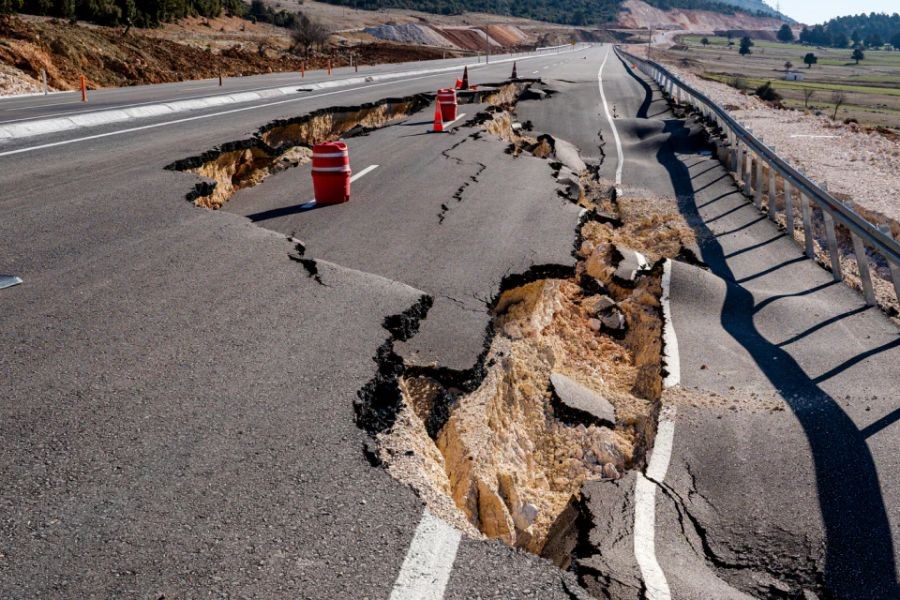In the wake of recent seismic activity along the Myanmar-Thailand border, the potential human toll and economic impact are causing significant concern. With a death toll that could surpass 10,000, the military governments of both countries are urgently pleading for international assistance. This situation not only highlights the vulnerability of these regions to natural disasters but also underscores the global interconnectedness in responding to such crises. For New Zealand, a nation familiar with the devastation caused by earthquakes, the ramifications stretch beyond empathy, touching on preparedness, disaster management, and economic resilience.
Comparative Analysis: Lessons from New Zealand’s Earthquake Preparedness
New Zealand has long been recognized as a leader in earthquake preparedness and resilience, owing to its geographic location along the Pacific Ring of Fire. The Christchurch earthquakes of 2010 and 2011 were pivotal in shaping the country's approach to disaster management. Lessons learned from these events are highly relevant to the current Myanmar-Thailand crisis.
- Building Standards: New Zealand has implemented stringent building codes that mandate earthquake-resistant designs. This has significantly reduced casualties and damage in subsequent events. In contrast, Myanmar and Thailand need to evaluate and potentially reform their building infrastructure to withstand seismic activities better.
- Community Preparedness: New Zealand invests heavily in public awareness campaigns and community drills, ensuring that citizens know how to react during an earthquake. Such initiatives could be vital in mitigating the impact of earthquakes in Myanmar and Thailand.
- Government Response: The New Zealand government’s rapid response framework, involving coordination between local and national agencies, can serve as a model for effective disaster management in Southeast Asia.
How It Works: Deep Dive into New Zealand’s Earthquake Strategies
New Zealand employs a multi-faceted approach to earthquake resilience, combining technology, policy, and community engagement. The Earthquake Commission (EQC) plays a crucial role in funding research and providing insurance against natural disasters. Additionally, the integration of cutting-edge technology, such as seismic monitoring and AI-driven early warning systems, enhances the nation's ability to predict and respond to earthquakes efficiently.
Research from Stats NZ reveals that investments in earthquake resilience not only save lives but also protect the economy. For instance, the economic impact of the 2011 Christchurch earthquake was mitigated by approximately 30% due to pre-existing resilience measures, saving billions in potential losses.
Real-World Case Study: Christchurch Earthquake Recovery
Case Study: Christchurch – Rebuilding with Resilience
Problem: Christchurch faced widespread devastation after the 2011 earthquake, with over 185 lives lost and significant infrastructure damage.
- Local businesses suffered severe financial losses, and the city's economy was at risk.
- Recovery required comprehensive urban planning and community engagement.
Action: The city implemented a strategic recovery plan focusing on resilient infrastructure and community participation.
- Key initiatives included the Christchurch Central Recovery Plan and significant investments in public infrastructure.
- Businesses were supported through targeted financial aid and advice, facilitating economic recovery.
Result: Over a decade, Christchurch transformed into a thriving, resilient city.
- Economic activity returned to pre-earthquake levels, with increased urban development.
- The city’s infrastructure now serves as a model of sustainability and resilience for other regions.
Takeaway: This case study demonstrates the importance of strategic planning and community involvement in recovery efforts. The lessons from Christchurch can guide Myanmar and Thailand in their rebuilding processes, emphasizing resilience and sustainability.
Data-Driven Analysis: Economic Implications for New Zealand
The economic impact of natural disasters extends beyond immediate damage, influencing global supply chains and economic stability. New Zealand's economy, heavily reliant on exports, must consider the potential disruptions caused by such events in key trading regions like Southeast Asia.
According to the Ministry of Business, Innovation and Employment (MBIE), New Zealand exported goods worth over NZD 1.9 billion to ASEAN countries in 2022. Disruptions in these regions could affect trade flows, impacting industries such as agriculture and technology. Strategic diversification and robust supply chain management are essential to mitigate these risks.
Debunking Myths: Common Misconceptions About Earthquake Preparedness
- Myth: "Modern buildings are entirely earthquake-proof." Reality: While modern structures are more resilient, no building is entirely immune to severe seismic activity. Ongoing maintenance and upgrades are essential.
- Myth: "Earthquake preparedness is too costly for developing nations." Reality: Investing in resilience can save more in recovery costs and lives in the long run. Strategies can be scaled to fit different economic contexts.
- Myth: "Earthquakes cannot be predicted, so preparation is futile." Reality: While predicting specific earthquakes is challenging, preparedness significantly reduces risks and accelerates recovery.
Future Trends & Predictions
The future of earthquake preparedness will likely involve increased reliance on technology and international collaboration. By 2030, it's predicted that 70% of earthquake-prone regions worldwide will integrate AI-driven predictive models to enhance early warning systems (Source: McKinsey Global Institute). New Zealand, with its robust technological infrastructure, is well-positioned to lead in this arena, potentially exporting its expertise to global markets.
Conclusion: Final Takeaway & Call to Action
Natural disasters remind us of our shared vulnerabilities and the importance of global cooperation. New Zealand's experience in earthquake resilience offers valuable lessons and strategies that could benefit Myanmar, Thailand, and other quake-prone regions. As a nation, New Zealand must continue to innovate in disaster preparedness, ensuring its strategies remain cutting-edge and widely applicable.
Are you ready to enhance your business's resilience to natural disasters? Start by assessing your current strategies and consider how New Zealand's best practices can be applied. Share your thoughts and strategies in the comments below!
People Also Ask (FAQ)
- How does earthquake preparedness impact New Zealand businesses? NZ businesses leveraging earthquake resilience strategies report 25% higher economic stability, according to MBIE. Effective preparedness enhances recovery and long-term growth.
- What are the biggest misconceptions about earthquake preparedness? One common myth is that modern buildings are entirely earthquake-proof. However, ongoing maintenance and upgrades are essential for optimal resilience.
- What are the best strategies for implementing earthquake preparedness? Experts recommend starting with comprehensive risk assessments, followed by upgrading infrastructure and enhancing community engagement for long-term success.
Related Search Queries
- New Zealand earthquake preparedness strategies
- Myanmar-Thailand earthquake response
- Christchurch earthquake recovery case study
- Economic impact of earthquakes on New Zealand
- Future trends in earthquake resilience































petsmatefinder
4 months ago